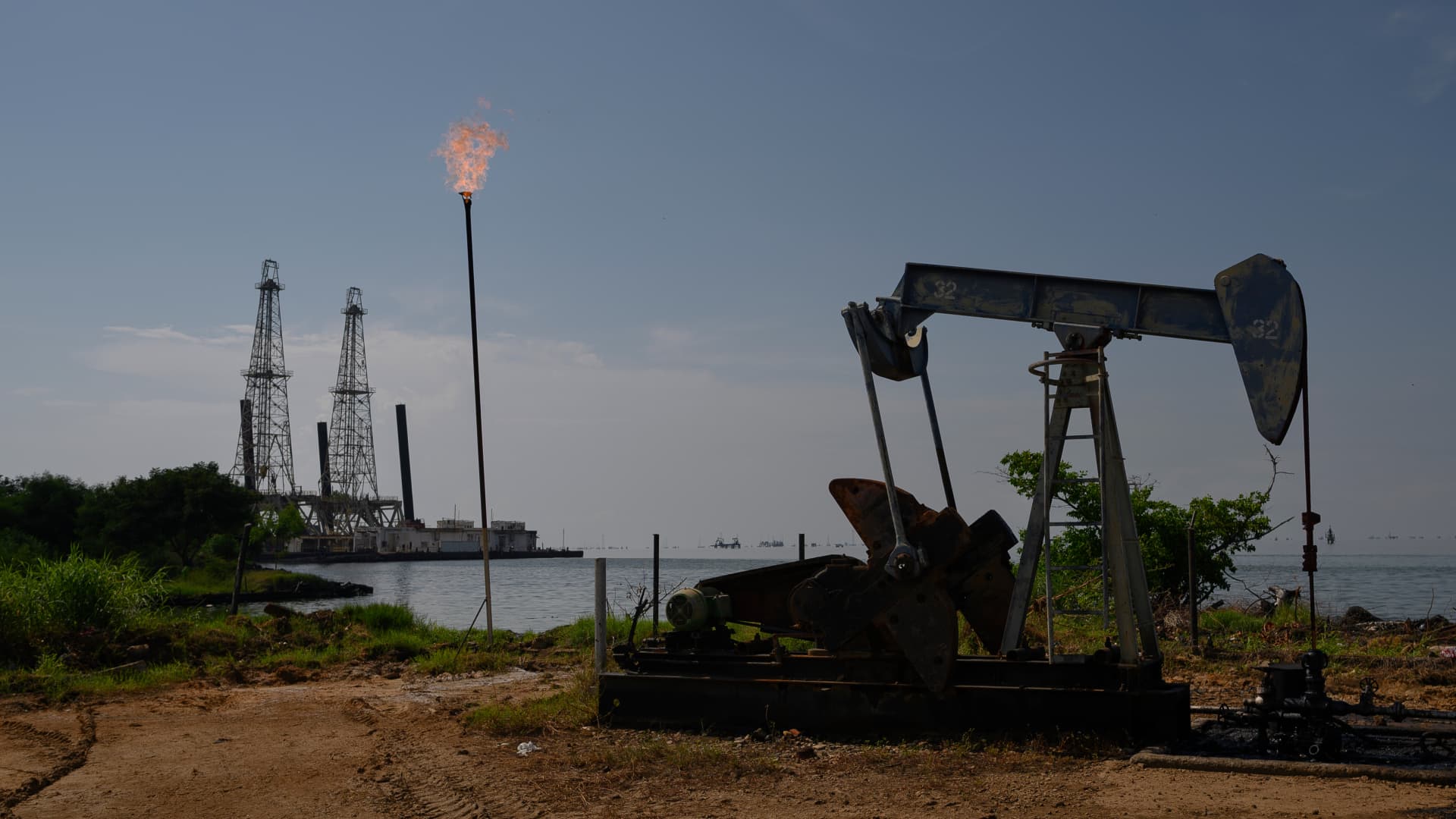A Petroleos de Venezuela SA oil pumpjack on Lake Maracaibo in Cabimas, Zulia state, Venezuela, on Friday, Nov. 17, 2023.
Gaby Oraa | Bloomberg | Getty Images
The International Energy Agency on Thursday said evidence of softening global oil demand is mounting and a slowdown is expected to continue into 2024, reaffirming a starkly different outlook compared to oil producing group OPEC.
The IEA said oil market sentiment had turned “decidedly bearish” in recent weeks, even after some members of OPEC and non-OPEC oil-exporting allies — collectively known as OPEC+ — on Nov. 30 announced a new round of voluntary production cuts in the first quarter of next year.
Oil prices were higher on Thursday morning, paring losses after recently falling to their lowest level since late June on gnawing oversupply concerns.
International benchmark Brent crude futures with February expiry traded 1.4% higher at $75.31 per barrel at 9 a.m. London time, while U.S. West Texas Intermediate crude futures for front-month January traded 1.3% higher at $70.36 per barrel.
In its latest monthly oil market report, the IEA said global oil demand was on course to rise 2.3 million barrels per day to 101.7 million barrels per day in 2023, noting that this forecast “masks the impact of a further weakening of the macroeconomic climate.”
The energy agency warned that “evidence of a slowdown in oil demand is mounting,” with the pace of expansion poised to “slow drastically” from 2.8 million barrels per day year-on-year in the third quarter to 1.9 million barrels per day in the final three months of 2023.
It prompted a downward revision of the IEA’s global consumption growth forecast of nearly 400,000 in the fourth quarter, with weaker-than-anticipated demand in Europe, Russia and the Middle East accounting for the bulk of that adjustment.
Looking ahead, the IEA said oil consumption growth is projected to halve next year, falling to 1.1 million barrels per day as global economic growth stays below trend in major economies, and as Covid-19-related distortions fade.
IEA vs. OPEC
OPEC, meanwhile, struck a markedly different tone in its latest monthly report.
The oil producer group, which has frequently clashed with the IEA in recent years over issues such as peak oil demand and the need for investment in new supplies, on Wednesday said that it remained “cautiously optimistic” about oil market dynamics in 2024.
OPEC blamed “exaggerated concerns” about oil demand growth for a recent downturn in oil prices and maintained its relatively high oil use prediction for next year.
It reaffirmed its outlook for world oil demand growth in 2023 at 2.46 million barrels per day, roughly in line with the IEA’s forecast.
For next year, OPEC said it sees world oil demand at 2.25 million barrels per day, unchanged from the previous month, but a sharply higher estimate than the IEA’s prediction of 1.1 million barrels per day for the period.

